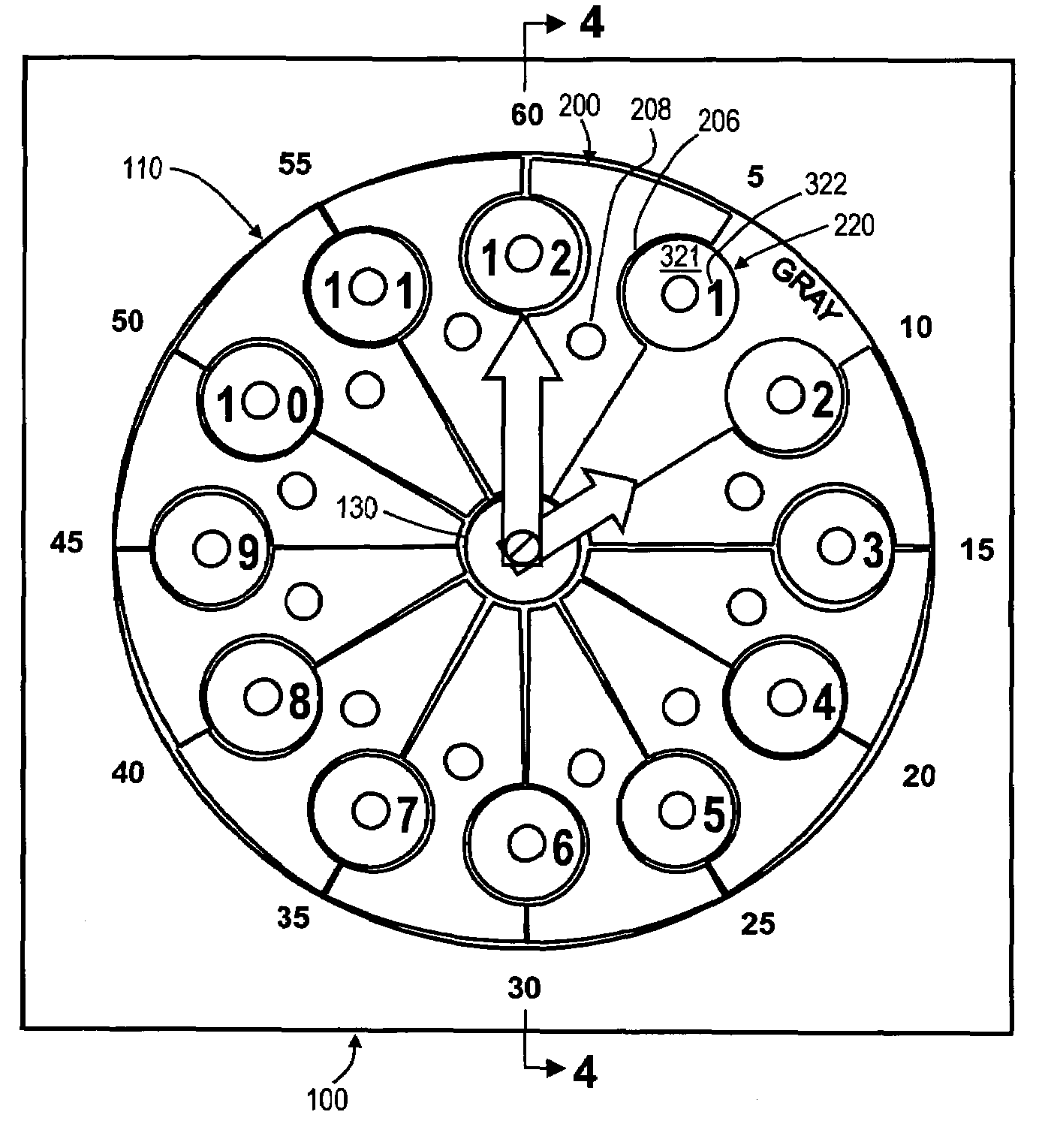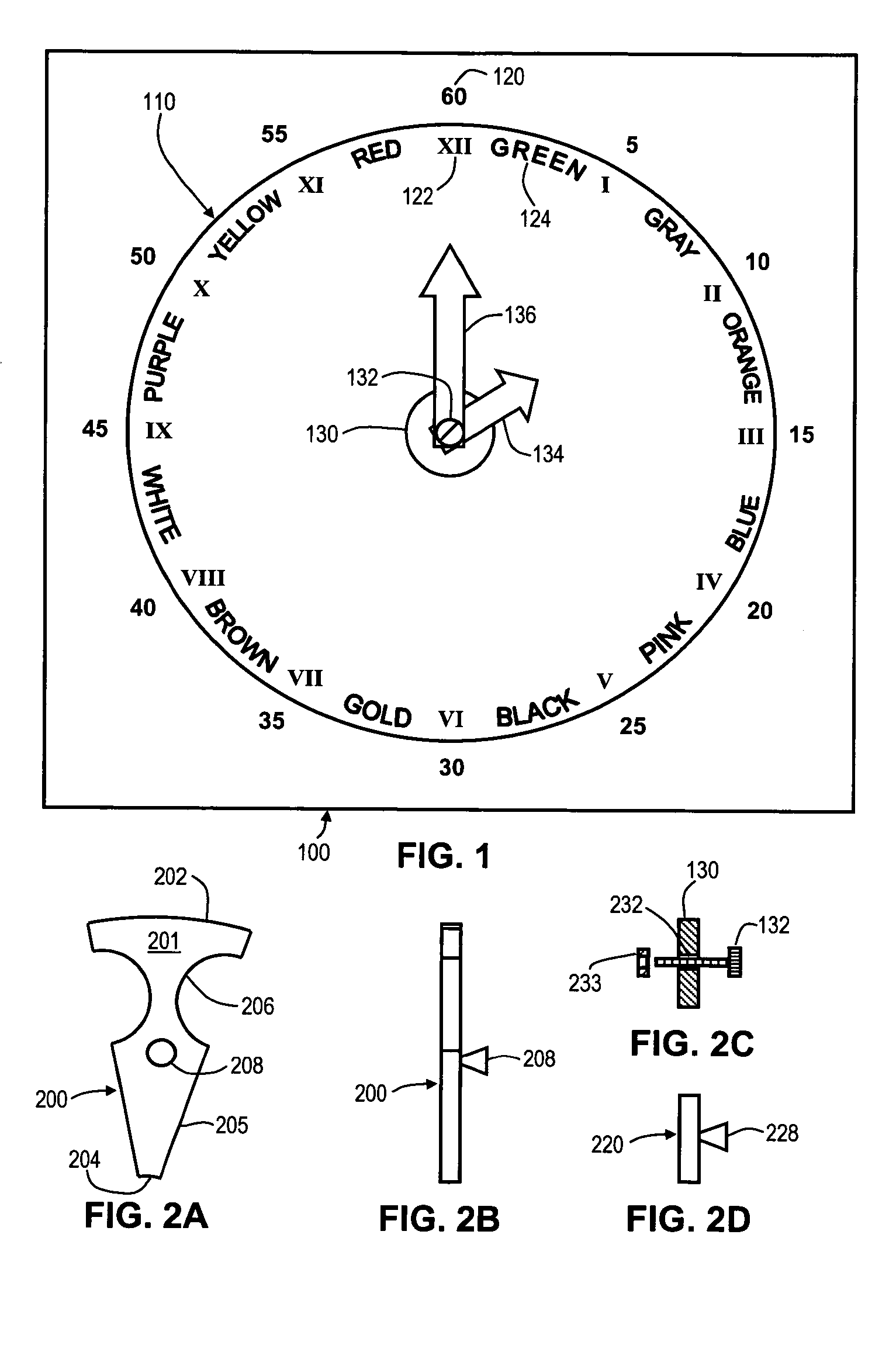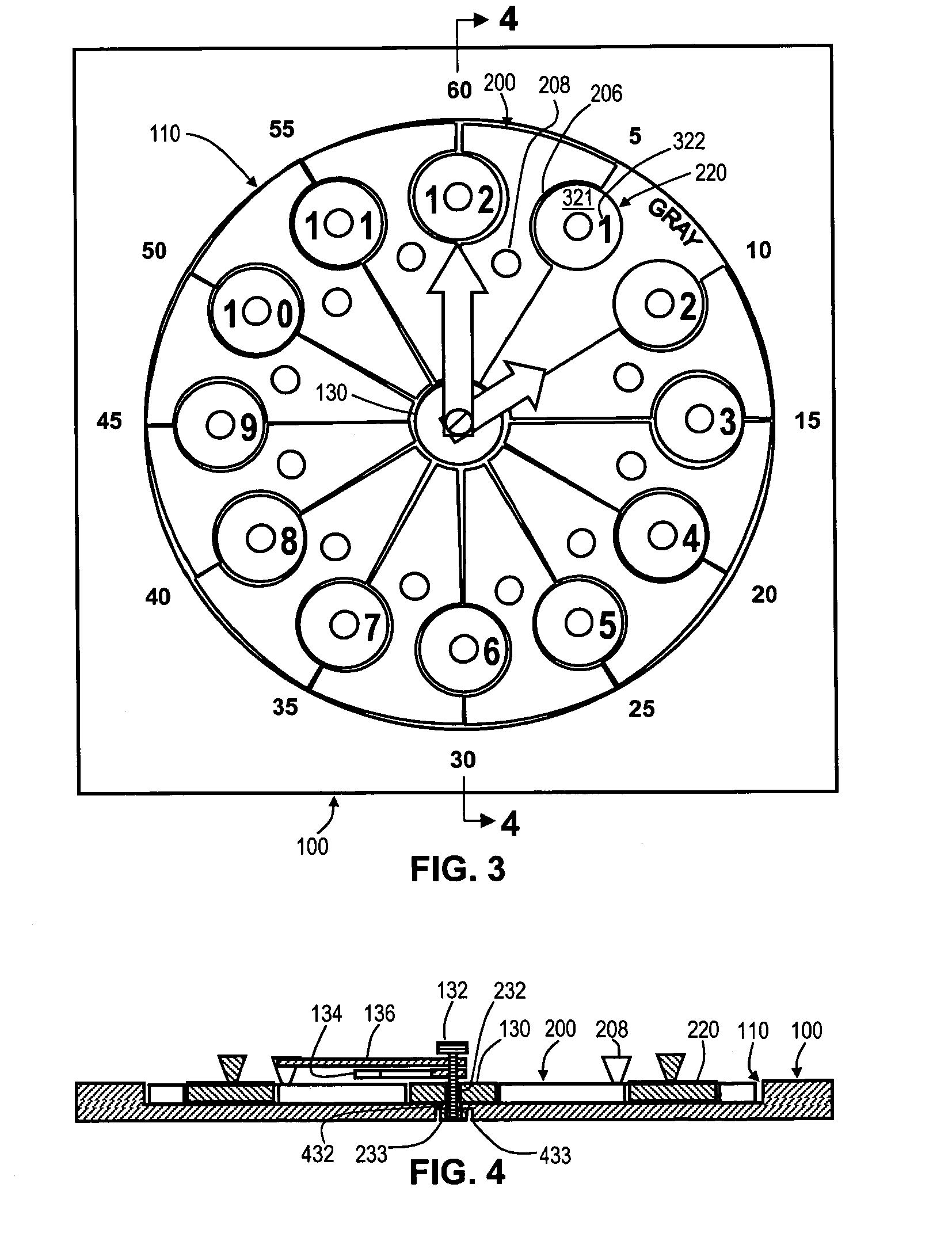Teaching clock
a technology of timer and clock body, applied in the field of timer, can solve the problems of insufficient interest for children, the operation the assumption of the most complex devices, so as to facilitate grasping abstract concepts and clarify conceptual relationships
- Summary
- Abstract
- Description
- Claims
- Application Information
AI Technical Summary
Benefits of technology
Problems solved by technology
Method used
Image
Examples
Embodiment Construction
[0012]FIG. 1 shows a plan view of a preferred embodiment of a clock base of the present invention. The base 100 may be rectilinear, round, polygonal, or any other convenient or attractive shape. Preferred construction materials are wood or plastic, although metals, ceramics, and other materials known in the art will serve. A portion of the base 100 contains a circle 110. The circle 110 is a broad, shallow cylindrical cavity that may be cut into the base with a router or milling tool, formed by laminating a sheet of material with a circular opening onto another sheet, or produced by other means known in the art.
[0013]Arabic numerals 120 denoting five-minute or five-second intervals are molded, printed, inscribed, or embossed immediately outside the perimeter of the circle 110 at points corresponding to 30 degree sections of arc, with “60” appearing at the 12 o'clock position, “5” at the 1 o'clock position, “10” at the 2 o'clock position, and so on around the circle 110. Roman numeral...
PUM
 Login to View More
Login to View More Abstract
Description
Claims
Application Information
 Login to View More
Login to View More - R&D
- Intellectual Property
- Life Sciences
- Materials
- Tech Scout
- Unparalleled Data Quality
- Higher Quality Content
- 60% Fewer Hallucinations
Browse by: Latest US Patents, China's latest patents, Technical Efficacy Thesaurus, Application Domain, Technology Topic, Popular Technical Reports.
© 2025 PatSnap. All rights reserved.Legal|Privacy policy|Modern Slavery Act Transparency Statement|Sitemap|About US| Contact US: help@patsnap.com



